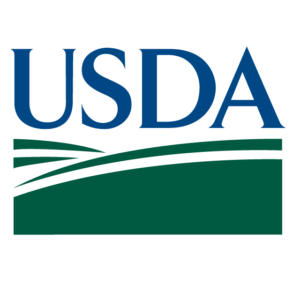Mar 1, 2022Interest rates for most USDA farm loans on the rise
The U.S. Department of Agriculture (USDA) announced loan interest rates for March 2022, which went into effect March 1.
USDA’s Farm Service Agency (FSA) loans provide important access to capital to help agricultural producers start or expand their farming operation, purchase equipment and storage structures or meet cash flow needs.
Operating, ownership and emergency loans
FSA offers farm ownership and operating loans with favorable interest rates and terms to help eligible agricultural producers, whether multi-generational,  long-time or new to the industry, obtain financing needed to start, expand or maintain a family agricultural operation. FSA also offers emergency loans to help producers recover from production and physical losses due to drought, flooding, other natural disasters or quarantine. For many loan options, FSA sets aside funding for historically underserved producers, including veterans, beginning, women, American Indian or Alaskan Native, Asian, Black or African American, Native Hawaiian or Pacific Islander, and Hispanic farmers and ranchers.
long-time or new to the industry, obtain financing needed to start, expand or maintain a family agricultural operation. FSA also offers emergency loans to help producers recover from production and physical losses due to drought, flooding, other natural disasters or quarantine. For many loan options, FSA sets aside funding for historically underserved producers, including veterans, beginning, women, American Indian or Alaskan Native, Asian, Black or African American, Native Hawaiian or Pacific Islander, and Hispanic farmers and ranchers.
Interest rates for Operating and Ownership loans for March 2022 are as follows:
- Farm Operating Loans (Direct): 2.375%
- Farm Ownership Loans (Direct): 3.000%
- Farm Ownership Loans (Direct, Joint Financing): 2.500%
- Farm Ownership Loans (Down Payment): 1.500%
- Emergency Loan (Amount of Actual Loss): 3.375%
Rates for farm operating loans, emergency loans and direct ownership loans have gone up since November 2021, while ownership rates for joint financing and down payments have stayed flat.
FSA also offers guaranteed loans through commercial lenders at rates set by those lenders.
You can find out which of these loans may be right for you by using our Farm Loan Discovery Tool (also available in Spanish).
Commodity and storage facility loans
Additionally, FSA provides low-interest financing to producers to build or upgrade on-farm storage facilities and purchase handling equipment and loans that provide interim financing to help producers meet cash flow needs without having to sell their commodities when market prices are low. Funds for these loans are provided through the Commodity Credit Corporation (CCC) and are administered by FSA.
- Commodity Loans (less than one year disbursed): 1.875%
- Farm Storage Facility Loans:
- Three-year loan terms: 1.500%
- Five-year loan terms: 1.750%
- Seven-year loan terms: 1.875%
- Ten-year loan terms: 1.875%
- Twelve-year loan terms: 2.000%
- Sugar Storage Facility Loans (15 years): 2.125%
Rates for farm storage facility loans have risen across the board since November 2021.
Pandemic and disaster support
FSA broadened the use of the Disaster Set Aside (DSA), normally used in the wake of natural disasters, to allow farmers with USDA farm loans who are affected by COVID-19, and are determined eligible, to have their next payment set aside. Because of the pandemic’s continued impacts, producers can apply for a second DSA for COVID-19 as well as a second DSA for a natural disaster for producers with an initial DSA for COVID-19. Producers must apply for the second DSA by May 1, 2022. The set-aside payment’s due date is moved to the final maturity date of the loan or extended up to twelve months in the case of an annual operating loan. Any principal set-aside will continue to accrue interest until it is repaid. This will improve the borrower’s cashflow in the current production cycle.
FSA also reminds rural communities, farmers and ranchers, families and small businesses affected by the year’s winter storms, drought, hurricanes and other natural disasters that USDA has programs that provide assistance. USDA staff in the regional, state and county offices are prepared to deliver a variety of program flexibilities and other assistance to agricultural producers and impacted communities. Many programs are available without an official disaster designation, including several risk management and disaster recovery options.
More information
Producers can explore available options on all FSA loan options at fsa.usda.gov or by contacting your local USDA Service Center.














